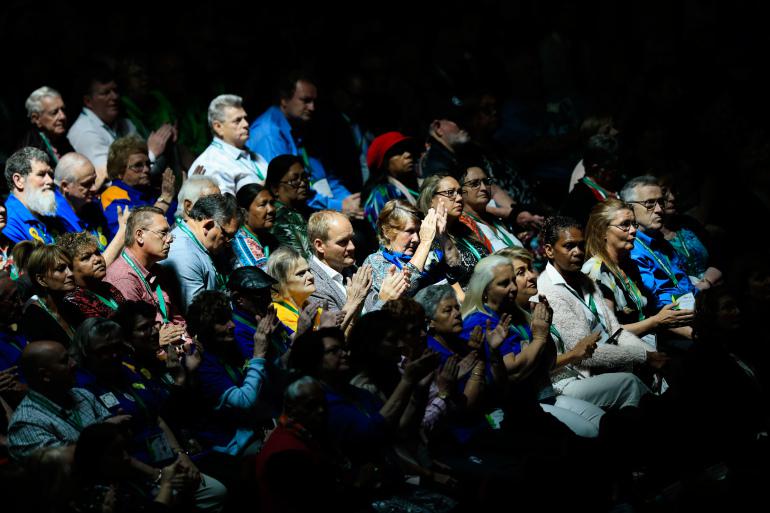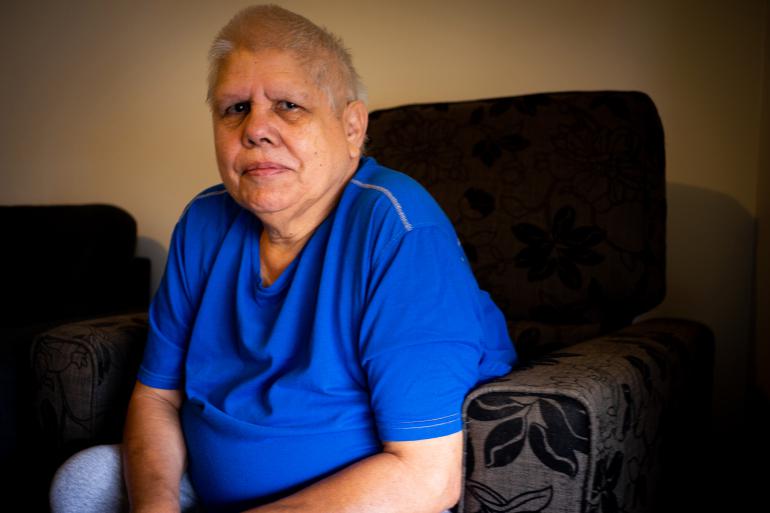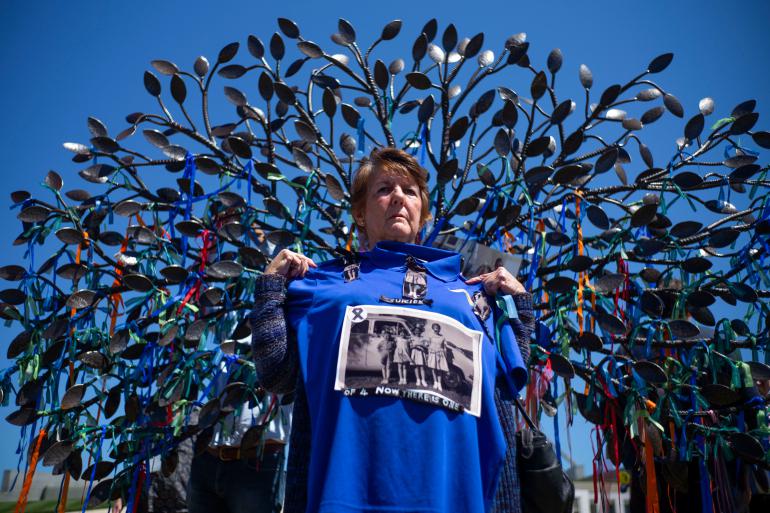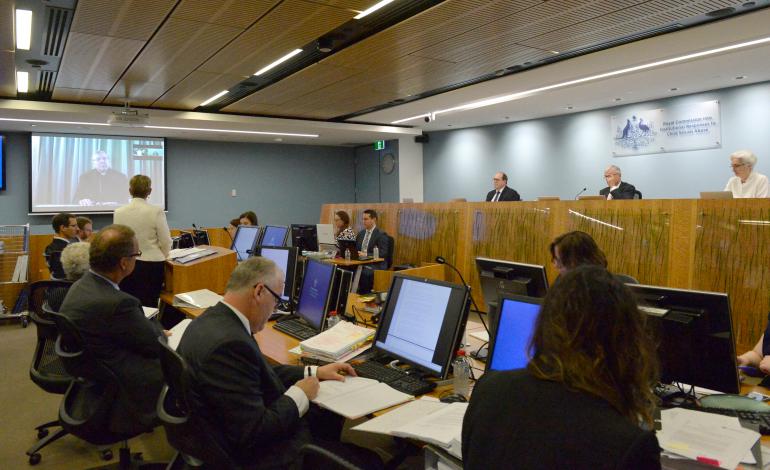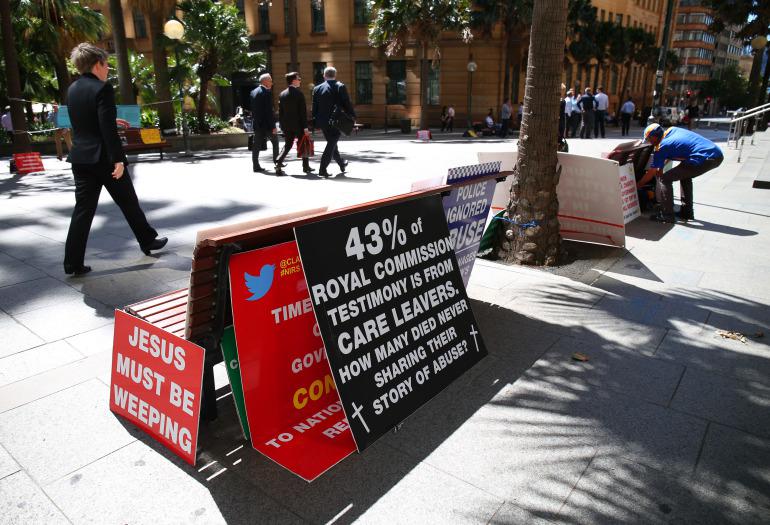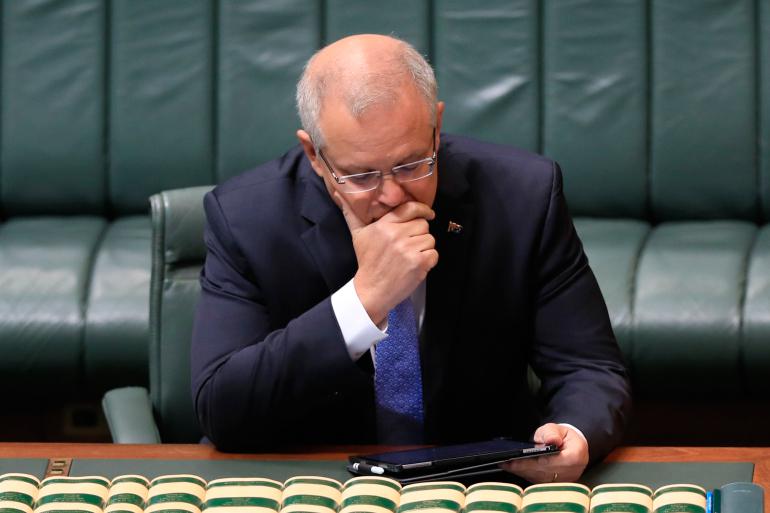|
Survivors reflect on Australia sex abuse inquiry, three years on
By Ali Mc
The landmark inquiry gave survivors a chance to talk, while legal changes have allowed them to seek redress. Kym Krasa was just eight years old when she was first sexually abused by a member of the Catholic Church. A so-called “part” Aboriginal child, she had been taken from her impoverished family and placed in an orphanage. But instead of being cared for, she was abused, and the abuse would continue for the next decade at the hands of a priest and church parishioners, and as a teenager, by a man for whom she was forced to work as a domestic servant. It was not until the Royal Commission into Institutional Responses to Child Sexual Abuse was established in 2012 that Krasa, now 67, could finally talk about her experiences. It is now three years since the commission completed its work. “You couldn’t talk to the nuns because they would not believe you,” she said. “Do we believe that person – that child – or do we believe a priest? So that’s why I could not talk to anybody about it.’ Abusive experiences were not uncommon for children in Australia in the 20th century, with a 2004 report stating that upwards of 500,000 Australian children were placed into church-run and state institutions. Another inquiry found that at least one in 10 Aboriginal children were removed from their families and made state wards of the government. The children were put into orphanages, foster homes, missions and other charitable institutions, only to be abused by the very people who were supposed to look after them. The reasons were varied. Some were child migrants sent from Europe. Some had suffered neglect at home. Some were simply the children of young single mothers who were deemed to be “unfit” to raise their own children. Aboriginal children, in particular, were removed from their families due to racist laws. Systemic abuseThe Royal Commission into Institutional Responses to Child Sexual Abuse confronted the sexual abuse of children such as the young Krasa and how the institutions had been able to cover up systemic abuse for so long. The precise number of children who suffered sexual abuse will never be known, but in five years the royal commission handled more than 42,000 phone calls, received 26,000 letters and emails, and heard more than 8,000 personal stories. Prime Minister Scott Morrison formally apologised to the survivors after the report came out. Krasa was one of those who told their story in a “private session” with a government-appointed commissioner. “It was hard to talk about stuff like that to [the commissioners],” she said. “It sort of eased the pain. I still think about things, but it was good to talk to somebody about it.” Private sessions provided an opportunity for survivors of sexual abuse to tell their story. For many – like Krasa – it would be the first time they would disclose their traumatic secrets. As well as collating stories of abuse the royal commission also investigated the issue of compensation for survivors. Historically, churches and other institutions had largely avoided compensation claims, mostly protected by the “Ellis defence” which meant that due to their legal status churches could not be sued. However, the royal commission helped overturn these and other laws of limitation that had previously prevented survivors from accessing justice. “What we are seeing now is, whereas survivors literally had no option in the past other than to go begging cap in hand to these institutions, these days survivors have got options,” said Angela Sdrinis, a lawyer who first started working with abuse claims in 1997. “In the last couple of years, it has been possible in some of the strong cases to achieve million dollar-plus settlements.” ‘We all suffered’Sdrinis says the investigations and research conducted by the royal commission greatly developed the legal system’s understanding of sexual abuse and the cover-ups that were instigated by churches and other institutions. “The royal commission produced masses of evidence regarding cover-ups and moving perpetrators around,” she said. “And that information just wasn’t available to us before. “If we didn’t have the royal commission there would be a whole lot of people missing out because of the nature of these [legal] claims.” Despite these legal changes, such cases remain difficult to win given the level of proof required to substantiate a claim of sexual abuse. As such, a National Redress Scheme was established in July 2018 to compensate those people who might not have enough evidence to support their claim in court. It will remain in operation for a decade. However, far from the million-dollar settlements that Sdrinis has sometimes been able to achieve for her clients, the average payment from the National Redress Scheme is 82,000 Australian dollars ($61,864). Leonie Sheedy is the CEO and co-founder of the Care Leavers Australia Network (CLAN), a community organisation that advocates on behalf of people who had been placed in institutions and made wards of the state. She is also a survivor of institutional abuse. Sheedy is positive about the work of the royal commission, and says its legacy was that it “exposed the terrible crimes committed on Australian children who had no one to turn to”. “We were believed, we were validated and listened to, and that is a wonderful legacy that the royal commissioners and the team did for this nation,” she said. But Sheedy says the National Redress Scheme payment is too small to help survivors. “That is a most insulting amount to give to children whose lives were shattered,” she said. “We’re not like the middle classes of this nation. We didn’t get an education. We don’t become the lawyers, the politicians, the doctors, the GPs, because of our limited education. The churches and charities exploited us and they wanted us to be farmhands and domestic slaves in wealthy peoples’ homes.” Sheedy also says other forms of abuse, such as psychological and physical abuse, neglect and unpaid child labour, should have been addressed in the royal commission. “There’s a whole group of care leavers in Australian society who feel extremely ignored because they were not sexually abused but suffered all the other indignities,” she said. This also means that many institutional abuse survivors will miss out on the National Redress Scheme. “Everybody deserves to be given redress for the crimes and the neglect and the child labour they did in orphanages. We all suffered.” To date, the National Redress Scheme had received 8,577 applications with 4,117 payments made, totalling around 340.3 million Australian dollars ($256.6 million). A spokesperson for the National Redress Scheme stressed the 82,000 Australian dollar ($61,864) payment was higher than the average payment of 65,000 Australian dollars ($49,023) that the royal commission recommended. They also noted that because the scheme was established in line with the recommendations and mandate of the royal commission, it was only able to provide compensation for survivors of sexual abuse, and not for physical, psychological or emotional abuse or for child labour. As well as the national scheme, other institutions have enacted their own forms of redress that do not require court claims. Krasa received 60,000 Australian dollars ($45,252), a written apology and access to continuing counselling under the Catholic Church’s national “Towards Healing” redress scheme. “I wasn’t worried about the money,” she said. “I just wanted someone to listen to my story, about what they did to me.” Despite the compensation offered, Krasa still suffers from the effects of the abuse that she experienced as a child and teenager, and regularly sees a specialist therapist and the counsellor at her local Aboriginal health service. She does not work and has had little formal education. “The apology was late – it came really too late,” she told Al Jazeera. “I accepted it, but I’ll still never forget what the nuns and [the priest] and other people did to me when I was younger.” Still, Krasa says without the royal commission she would never have told anyone about the sexual abuse she suffered. “I reckon I’d still be carrying it until I’d be gone off this Earth. I’m glad I got my story out there.”
|
.
Any original material on these pages is copyright © BishopAccountability.org 2004. Reproduce freely with attribution.
